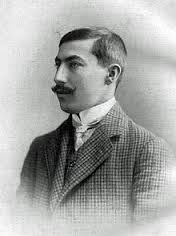
Student Game Analysis #2: Misplaced Pieces
Mikusbunkarus is a rapidly improving student of mine who plans to soon make his Over The Board chess debut. Already rated 1400 online, I am sure he will have a successful first outing.
To prepare, we've been learning pawn structures as that is a great way to learn opening ideas and middle game plans at the same time. Two birds, one stone. We started with the Caro-Slav—as common as it is versatile; the structure can be reached from either 1.d4 or 1.e4. I've recommended the Scandinavian to him as a reliable way to reach the Caro-Slav against 1.e4.
The main line runs as follows:
Why not use this structures namesake: the Caro-Kann? In my praxis, White players choose either the advance or exchange systems frequently, and so the Caro-Kann is not a reliable choice for achieving the Caro-Slav Structure.
Still, Mikusbunkarus, as with all players who learn a new opening, is facing the problem of non-book moves which hinder his standard development. It is this problem that I want address to though one of Mikusbunkarus's games. In this game, his opponent played the bizarre Bd3 before advancing his d-pawn.
Clearly, the Bishop blocks White's ability to play the space gaining d4. If he wants to develop his Dark Squared Bishop, he will either lose a tempo moving the Bishop away, or fianchetto the DSB on b2. When you see a misplaced piece the impulse is usually to attack the piece, but it's often best to let the piece be. Here is an example from my own play:
Back to our Scandinavian position, MikusBunkarus decided to play his standard Scandinavian setup which as you would have it, attacks the misplaced piece. In doing so, he allowed White the opportunity to reroute the wayward Bishop without loss of time.
Instead, Black can take advantage of the awkwardness of Black's Bishop and force it to lose time effectively taking away White's first more advantage.
Despite this small opening faux pas, Mikusbunkarus went on to find himself in a very nice opposite side castled position where is executed a model pawn storm.
You can check out the whole game with Mikusbunkarus's notes in his blog. And for those interested in learning more about the Caro-Slav structure, you can find a better place to start than with Danny Rensch's excellent video series Pawn Structure 101.
As always, thanks for checking out my blog! Be sure to add me as a friend to be notified of future blog entries! Leave a comment. I love to hear from you.
